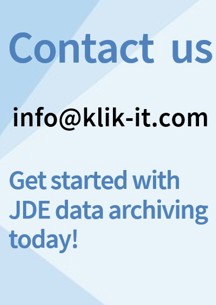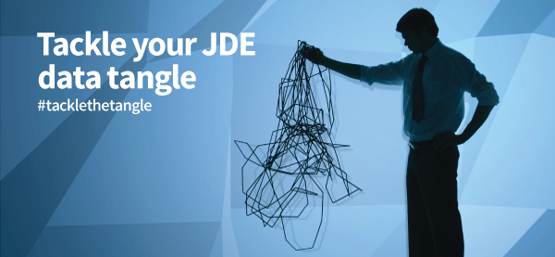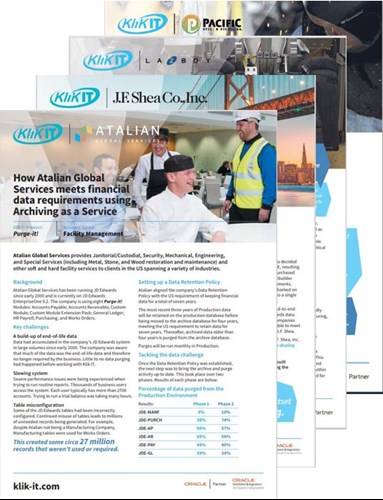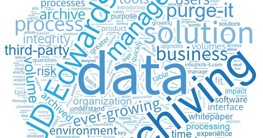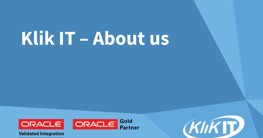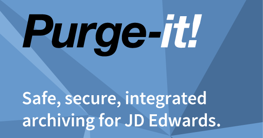
The business impact of retaining too much data in your JD Edwards system can be far reaching:
- Deterioration in system performance creeps up gradually on an organization with potentially serious consequences
- Legal liabilities associated with storing data are magnified
- The larger your data footprint the more costly the storage, and cloud computing power needed to process it
- Slow batch job run times and back up times can begin to impact the working day
- Longer upgrade times and greater risks
- Need for increased investment in hardware
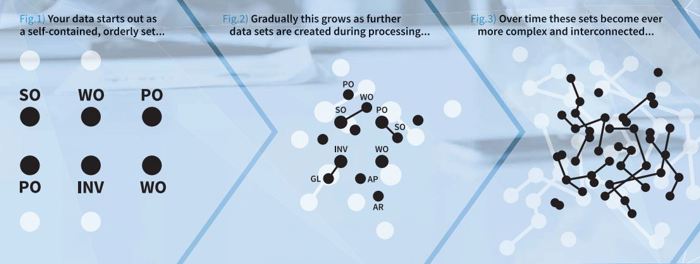
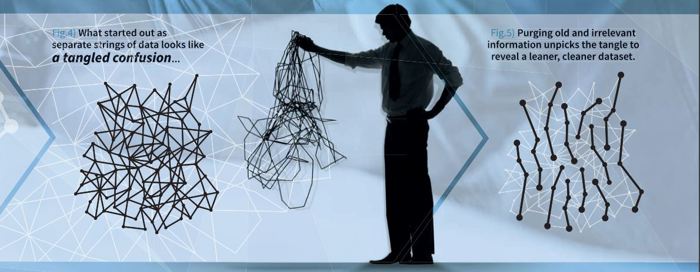
Your JD Edwards data
As a JD Edwards user, your company will collect data in the normal operation of its business processes. You may have decades of JD Edwards data, or you may have performed some inhouse archiving in the past or you may never have archived since you moved onto JDE. Whatever your JD Edwards data story, we're happy to chat with you about data management options.
Get in touch to chat about
Your JDE data
Your data consists of items or ‘sets’ that come from everyday business processes. These sets of data start out as self-contained pieces representing an individual process. For example:
- A Sales Order (SO)
- A Purchase Order (PO)
- An Inventory item (INV)
- A Manufacturing Works Order (WO)
Over time, as sets of data are processed, other sets are created to support the processing of the item.
- A SO may require the purchase of a part, creating a PO, linking to the SO
- A SO may require the manufacture of an item, creating a WO, linking to the SO
- An Invoice will be raised to send to the customer which will link to the SO
- Financial postings will be made to the GL for the Invoice and to other parts of JD Edwards
- and so the list grows and applies to many different business processes.
Over time your business moves away from having a database that consists of many separate sets of data. Instead, your database has a structure more akin to multiple ‘strings’ of interconnected data sets.
The quantity and complexity of the interconnected and overlapping data strings build and grow.
Eventually, this sizeable amount of data can start to resemble a huge deeply tangled web.
After decades of data collection, you may be wondering where to start or how to start. Common concerns include:
- How much disorder is my JD Edwards data in?
- How is the data arranged?
- How can I make sure it doesn't get out of sync?
- What action can I take with decades of JD Edwards data?
- What if I still need access to all the data?
With the right data management tools and good JD Edwards knowledge, the task is easier and simpler than you might imagine.
What's the first step?
Start out by getting an understanding of the nature of the data sets, and the defined relationships in JD Edwards for your data ‘web’. By starting to comprehend it you are immediately better positioned to kick off the process of unpicking your unique data tangle.
Some data will have important value to your business in your ERP. However, there will be a quantity of data that will have little or no benefit due to the type, nature and age of that data.
5 steps to make your JD Edwards data
-
leaner
-
cleaner
-
fit for purpose
-
Identify old and complete JDE data.
This can be archived.
It can be purged later, if necessary. -
Understand the relationships the data has with other data in the JD Edwards system.
-
Cross validate the related data.
-
Remove the strings of data from your JD Edwards system and move them into an archive.
-
Identify incomplete data and data with bad integrity. Flag the incomplete data for checking and fixing where appropriate.
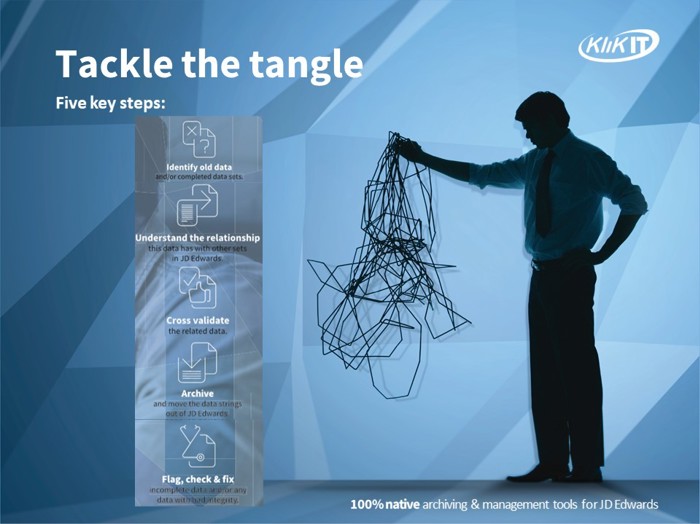
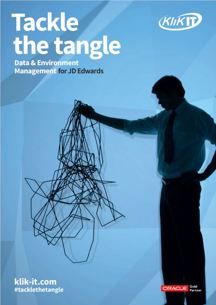
Tackle the Tangle Brochure
Download >

Introduction to archiving for JD Edwards - video
Watch >
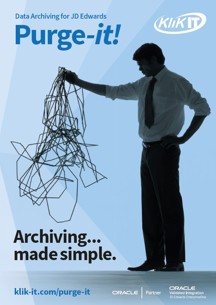
Purge-it! Data Archiving brochure
Download >
Head over to the Purge-it! product pages...
Find out what makes the Purge-it! data archiving solution the safest and easiest to use solution for JD Edwards archiving.

Finding the right JD Edwards data archiving solution
Download >
What's an integrated archiving solution?
Download >
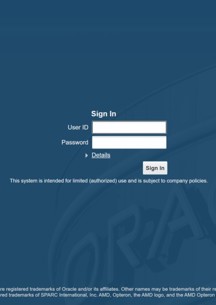
Why is JD Edwards running slow?
Download >
Find JD Edwards content, product documentation and new features.
Please note: 'Learn JDE' is a separate website, not maintained by Klik

Learn JDE: The JD Edwards Resource Library
Download >
